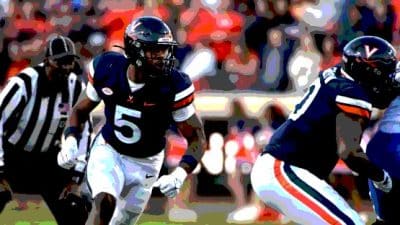
Having watched approximately 1 million swings in my fourteen years as a teaching professional, I have seen several patterns emerge in terms of the things that golfers tend to do when they whack a golf ball. I have also seen hundreds of golfers benefit from the following: bending the spine forward more than they usually do, moving closer to the ball than they usually stand, creating slightly steeper planes during the swing, and learning to “trap” the ball with the center of the club-face (which generally produces more of a divot with the irons). But there is something standing between the average golfer and the changes that allow pure ball striking, literally. It is his golf club. Even a “standard” length club can be too long for many golfers to achieve the things mentioned above.
It takes a shorter club for most people to create the desired spine and shaft angles, swing planes, and contact with the ball. As would be expected, the shorter club and the improved planes create better accuracy with the golf shots. It surprises people, though, that they can actually hit the ball farther with these changes, mostly because of the solid contact.
A shorter club technically should improve control and accuracy. A longer club technically should increase distance. A club that is properly fitted in terms of the length of the shaft will maximize accuracy and distance. What I am saying is that the clubs most golfers are playing with, and even fitted for, are too long to maximize either; even when we call them “standard” in length.
Comparing tour players to average players gives some anecdotal evidence. Notice that tour players look “big” compared to their clubs. Even in a longer iron, say a 4-iron, they seem to be standing “on top” of the ball, meaning the ball is not too far from their feet. Their spines are generally bent forward a fair amount, and the shaft of the club points at the belt-line, and often higher.
The average player, on the other hand, looks like he is swinging a flag pole when he picks up a 4-iron. He stands almost vertical in his posture, the club reaching across two time zones to reach the distant ball, and the shaft points at his belt-line and sometimes lower.
The results of these two setups are very different too. The tour player creates planes with his setup that allow him to attack the ball with a fairly steep angle that produces solid contact, high trajectory, tons of distance, and even some of that backspin that so many amateurs worship. The average player, with his upright posture and flat shaft angle, has a shallower attack on the ball that leads to “picked” shots, inconsistent trajectory, blocks, and hooks; unless he tries to match the swing planes of better players (without the benefit of the posture and angles at address), in which case he will likely see fat shots, slices, and contact on the toe of the club.
There are some aspects of tour swings that I do not encourage average golfers to emulate (such as the length of the arm-swings), and some people cannot physically duplicate the posture and swings of elite players; but most weekend warriors would do well to copy the setup of the world’s best players, which might mean a club that makes them look “big”.
For years, and with many average golfers, I have seen how the setup and then the swing can be made less effective by long clubs. Sometimes a shorter player who struggles to get the ball airborne can see dramatic results just by choking down on the club, bending over from the hips more, and moving closer to the ball. Unfortunately their friends, instructors, club-fitters, and club manufacturers try to get longer clubs in their hands so that they can supposedly hit the ball farther. The result is that these struggling golfers can hardly make contact at all, and even when they do, they learn a tortured swing that produces inconsistency rather than distance.
Some more evidence that club length is overrated as a source of distance: In most sets of clubs, each iron is one-half inch shorter than the number below it. That is what creates the change in distance, right? Not really. Usually the clubs stop getting shorter above the 9-iron, meaning the various wedges are the same length as the 9-iron. And yet each wedge above the 9 hits the ball less far. Why? Because of the loft. The angle of the clubface has more to do with the change in distance from club to club than the length of the shaft.
I recently read about a driver test carried out by a club-fitting company. They used a hitting machine to test a driver at a swing speed of 90 miles per hour, and made variations in the length of the driver from 42 to 46 inches. The distance gain when they added four inches to the shaft was a miserable 1.3 yards. And in human hands the ball contact is likely to suffer before reaching the 46-inch version of the driver, which makes it possible that the 42-inch driver would go significantly farther.
From a teacher’s perspective, I think over-length drivers are one of the worst things that ever happened to the swings of average golfers. Thank goodness the long shafts are attached to melon-sized clubheads with tons of forgiveness, because the swing planes that result from these long clubs make it nearly impossible for most golfers to hit the sweet spot. And the club is so disproportionately long compared to the rest of the set that it almost requires its own swing—which sometimes leads a golfer to foul up his swing with the other clubs in search of the long tee ball.
Tour players, who play golf courses that are hundreds of yards longer than the courses we play, and play for millions of dollars, have drivers that average about 44 inches in length. If longer drivers helped them maximize their distance and accuracy, they would definitely use them. And yet duffers with less ability insist on using longer, more difficult clubs.
Some club-fitters have come to the same conclusions that I have as a teaching professional. Tom Wishon, one of the elite club designers in the world, said in his book The Search for the Perfect Golf Club, “Ninety-eight percent of men’s drivers these days are built to a “standard” length of 45 or 45.5 inches, and I am here to tell you that a 45-inch driver will not fit 90 percent of all golfers and will never allow them to achieve their best combination of distance AND accuracy.” This agrees completely with what I have seen on the driving range.
Golf is an oxymoronic game. Swinging easy creates power. Hitting down makes the ball go up. And in many cases, shorter sticks lead to longer shots. As Wishon said in his book, “It appears that, in the hands of real people…the shorter club might very well hit the ball not just with more accuracy, but farther as well.”
John Rogers is a full-time teaching professional and director of instruction at Lake View Golf Club in Harrisonburg. Check out his website for more on the game of golf – www.golfthingsconsidered.net.










